|
In another biophysics breakthrough, new research indicates
that pulses of visible light from a laser can be used
to destroy viruses in biological samples, such as blood.
According to reports, the visible light is actually more
effective at disrupting the virus' structure than traditional
eradication methods, such as UV or microwave irradiation.
Those other forms can also trigger mutations within the
viruses, perhaps generating resistances.

A laser is a device which is built on the
principles of quantum mechanics to create a beam
of light where all of the photons are in a coherent
state - usually with the same frequency and phase.
(Most light sources emit incoherent light, where
the phase varies randomly.) Among the other effects,
this means that the light from a laser is often
tightly focused and does not diverge much, resulting
in the traditional laser beam.
How a Laser Works
In simplest terms, a laser uses light to stimulate the electrons
in a "gain medium" into an excited state (called optical
pumping). When the electrons collapse into the lower-energy unexcited
state, they emit photons. These photons pass between two mirrors,
so there are more and more photons exciting the gain medium, "amplifying" the
intensity of the beam. A narrow hole in one of the mirrors allows
a small amount of the light to escape (i.e. the laser beam itself).
Source
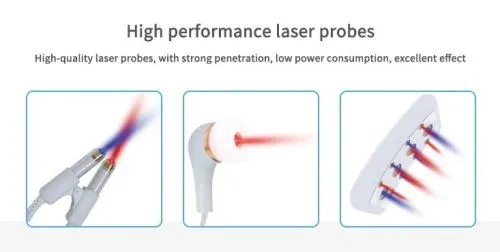
How do the flash tube and the crystal
make laser light?
1.A high-voltage electric supply makes the tube
flash on and off.
2.Every time the tube flashes, it "pumps" energy into
the ruby crystal. The flashes it makes inject energy into the crystal
in the form of photons.
3.Atoms in the ruby crystal (large green blobs) soak up this energy
in a process called absorption. When an atom absorbs a photon of
energy, one of its electrons jumps from a low energy level to a
higher one. This puts the atom into an excited state, but makes
it unstable. Because the excited atom is unstable, the electron
can stay in the higher energy level only for a few milliseconds.
It falls back to its original level, giving off the energy it absorbed
as a new photon of light radiation (small blue blob). This process
is called spontaneous emission.
4.The photons that atoms give off zoom up and
down inside the ruby crystal, travelling at the
speed of light.
5.Every so often, one of these photons hits an already excited
atom. When this happens, the excited atom gives off two photons
of light instead of one. This is called stimulated emission. Now
one photon of light has produced two, so the light has been amplified
(increased in strength). In other words, "light amplification" (an
increase in the amount of light) has been caused by "stimulated
emission of radiation" (hence the name "laser",
because that's exactly how a laser works!)
6.A mirror at one end of the laser tube keeps the photons bouncing
back and forth inside the crystal.
7.A partial mirror at the other
end of the tube bounces some photons back into
the crystal but lets some escape.
8.The escaping photons form a very concentrated
beam of powerful laser light.
Source |
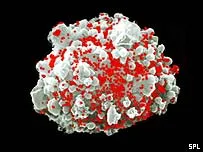
Laser Blasts Viruses In Blood
ScienceDaily (Sep. 5, 2007) — A father-son research team working
from separate laboratory benches across the country has discovered a
new use for lasers — zapping viruses out of blood. The technique,
which holds promise for disinfecting blood for transfusions, uses a low-power
laser beam with a pulse lasting just fractions of a second.
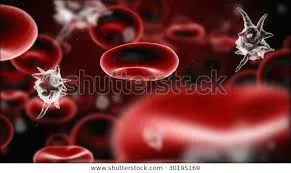
Johns Hopkins University student Shaw-Wei
David Tsen says it was during a stroll in the park with
his father that the idea was born. Tsen, an
immunology researcher in the laboratory of T.C. Wu at Hopkins’ Kimmel
Cancer Center, sought a new method to rid isolated blood of dangerous
pathogens, including the viruses HIV and hepatitis C. He says current
techniques using UV irradiation and radioisotopes can leave a trail of
mutated or damaged blood components.
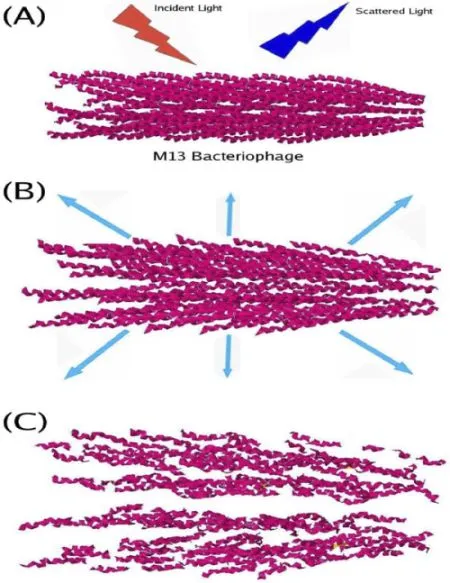
Figure 1. Demonstration of how a M13 bacteriophage
is inactivated by a USP laser. (A) The laser interacts
with the viral particle. (B) The laser excites the virus'
protein shell by ISRS. (C) When the excitation's amplitude
is large enough, the protein shell breaks apart, inactivating
the viral particle (Royal
Rife did similar with frequencies) Click
on picture for more explanation
Ultrashort pulsed laser treatment inactivates
viruses by inhibiting viral replication and transcription
in the host nucleus
Highlights
We reveal evidence supporting a functional capsid
defect in viruses inactivated by ultrashort pulsed
laser treatment.
USP laser targeting of capsids is a unique mechanism with advantages against
rapidly mutating or drug-resistant pathogens.
USP laser treatment has applications in pathogen reduction, antiviral treatments,
and vaccine development
We reveal evidence for a functional capsid defect
in USP laser-inactivated virus. This information will
be indispensable for the translation of this platform
technology toward clinical applications. Development
of this USP laser technology for pathogen reduction
of pharmaceuticals, antiviral therapies, and viral
vaccine development is warranted. Source |
Using ultrasonic vibrations to destroy viruses was one
possibility, but his father, Kong-Thon Tsen, a laser
expert at Arizona State University, had a better idea:
Lasers, unlike ultrasound, can penetrate energy-absorbing
water surrounding the viruses and directly vibrate the
pathogen itself.
| A study by Kong-Thon Tsen of Arizona State
University along with researchers at Johns Hopkins
University shows how strong blasts of visible light
from a low-power laser can kill viruses. The laser
technique appears to be more successful than other
methods at killing viruses, while also posing less
harm to healthy tissue.
In their study, the researchers blasted
a virus with a quick pulse of purple laser
light. The laser, which only shines for 100
femtoseconds (a femtosecond is one millionth
of a billionth of a second), causes the virus's
capsid (its outer shell) to vibrate and become
damaged. Essentially, the virus becomes "deactivated" while
the area around the virus remains unharmed.
The treatment doesn't cause viruses to mutate
either, which is a problem in other virus treatments
and can lead to viral resistance.
While the treatment is still in testing,
it presents an array of potential applications.
Serious diseases like HIV/AIDS and hepatitis
could be blasted with laser light.
|

The researchers aimed a low-power laser with
a pulse lasting 100 femtoseconds (10-13 second) into
glass tubes containing saline-diluted viruses that
infect bacteria, also known as bacteriophages. The
amount of infectious virus within each cube plummeted
100- to 1000-fold after the laser treatment. “I
had to repeat the experiment several times to convince
myself that the laser worked this well,” says
the younger Tsen.
His laser is different from those emitting a continuous
beam of visible light. “Our laser repeatedly sends
a rapid pulse of light and then relaxes, allowing the
solution surrounding the virus to cool off,” Tsen
says. “This significantly reduces heat damage to
normal blood components.”
The low-power laser fries at frequencies that
can selectively nail viruses, but leave the human
cells around them unharmed. The laser doesn't destroy
viruses through heat -- but through vibrations,
instead. |
Building on the idea that vibration wrecks a virus’ outer
shell, the scientists found that their low-power laser
selectively destroys viruses and spares normal human
cells around them, while stronger beams kill almost everything.
Father and son speculate that laser vibrations could
destroy drug-resistant and -sensitive viruses alike.
Wu says that the technique his student developed “could
potentially be used to control communicable diseases
by giving infusions of laser-treated blood products.”
The scientists published their results in the July 13
issue of the Journal of Physics: Condensed Matter. They
will continue their studies using different viruses.
Says Wu, “We believe this work on bacterial viruses
is promising, but the real test will be with more serious
pathogens like HIV and hepatitis.”

The National Science Foundation
funded the research.
Additional collaborators include Chih-Long Chang and
Chien-Fu Hung from Johns Hopkins and Juliann G. Kiang
from the Uniformed Services University of the Health
Sciences.
Source
How is laser light different from ordinary
light?
Lasers are more than just powerful flashlights.
The difference between ordinary light and laser
light is like the difference between ripples
in your bathtub and huge waves on the sea.
You've probably noticed that if you move your
hands back and forth in the bathtub you can
make quite strong waves. If you keep moving
your hands in step with the waves you make,
the waves get bigger and bigger. Imagine doing
this a few million times in the open ocean.
Before long, you'd have mountainous waves towering
over your head!
A laser does something similar with light
waves. It starts off with weak light and keeps
adding more and more energy so the light waves
become ever more concentrated. The "white" light
produced by an ordinary flashlight contains
many different light rays of different wavelengths
that are incoherent (out of step with one another).
But in a laser, all the light rays have the
same wavelength and they are coherent (in step).
This is what makes laser light such a powerful
concentration of energy.
Soutce |
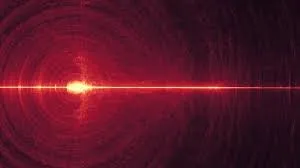
Semiconductor Laser Tharpy treats HIV/AIDS
New technologies are currently being studied in the world, in which the
laser impulses can kill viruses contained in blood without killing
the healthy tissues. These technologies are in the stage of verification
and they consist in laser light impulses destroying viruses, ut not
healthy cells: http://news.israelinfo.ru/.

Laser semiconductor laser therapy of the blood – works
on the principle of normalisation of blood conditions
and immunity, increasing this way the resistance of live
tissues to bacteria, viruses and infections. It leads
to the incerase of quality of life and to the treatment
or suppression of primary disease or accompanying complications.

Annalise your blood instantly
Disinfecting blood
Tsen told New Scientist that the technique could be
used to disinfect blood or other
biological
samples in hospitals.
“ In addition, we believe that the method may be especially
important in designing novel
treatments for blood-borne viral diseases,” he
said. “For example blood dialysis allows us to
irradiate a patient’s blood outside the body
and potentially cleanse it of infectious virus particles
before reintroducing it into the patient. ”
The team now plans to test the efficacy of its technique
in killing a wide range of deadly viruses,. “We also plan
to conduct further tests on the effects of the low-
power visible laser on mammalian cells to determine
any potential side effects and confirm that it
selectively kills viruses,” said Tsen” |
The study of Mr. Sizov and Maslov /1999/ studied the
effectiveness of laser therapy in HIV/AIDS treatment.
They have irradiated the blood, bone marrow and immuno-competent
zones of human body. The conditions of patients improved
already after one application of laser therapy. The normalization
of blood was proven and the immunity improvement. Bz
the majority of patients the disease did not proceed
to the heaviest stage during and after the treatment
http://www.milta.kiev.ua/pubs/BOOK2/g23.html
On the basis of these results, positive effect of laser
on the blood and immunity can be expected in most cases
diagnosed with HIV/AIDS.
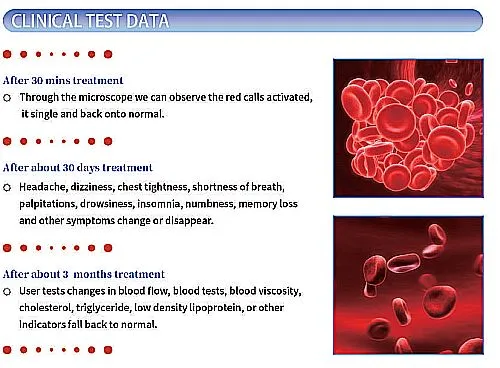
Clinical studies carried out in Russia on HIV/AIDS ???/????
show that the complex laser effect is efficient and brings
results. It leads to effective normalization /modulation/
of blood. It also leads to the improvement of general
patients´ conditions of patients, lifesaving and
improvement of quality of life through elimination of
AIDS related illnesses. Monitoring shows that positive
results of treatment persist for a relatively long time,
i.e. 6 to 12 months after last treatment.
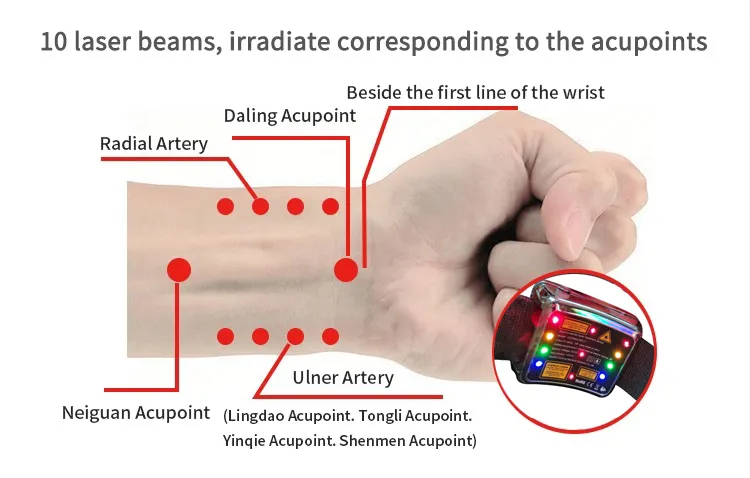
Nasal and Blood Laser enables a day-to-day blood irradiation
and this causes that the effect lasts for a long time.
It enables also surface irradiation of biologically active
points. Several sources find such combined therapy to
be effective and efficient. However, crucial is the blood
irradiation through nasal cavity with the complex curative
effect on the whole human body. In the case of HIV diagnosis,
some resources list regions/points such as: veins in
the region of elbow, region of projection of thymus,
projection of liver from the front, projection of spleen
from the front, armpit and vertebra and other imunity
related points.
Ing. František Kokoš, Yalong Trade s.r.o.

Blood can be irradiated by either the intravenal,
the skin or the intranasal method, with the
lattermost one becoming the most spread these days.
The intravenal method is the most widely described
one, since there exist hundreds medical studies about
it and it has been used in Russia for 20 years and
in Germany and other countries of western Europe for
over 10 years. The intranasal method has been applied
for 10 years and its mechanisms are the same. Nasal
blood irradiation, however, also stimulates Your meridians,
since the laser light works as a needle in acupuncture,
i.e. it stimulates the acupuncture points within the
nose.
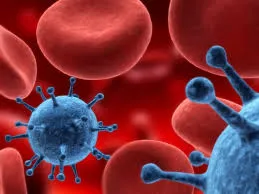
The first doctors to use the internal blood irradiation
method were cardiosurgeons E.N. Meshalkiny and V.S. Sergievski
(1981), followed by gradual applications of the method
in stomatology, endocrinology, urology, cardiology, surgery
and neurosurgery, gastroenterology, oncology, lung medicine
and other areas of medicine.
High blood pressure;
High blood fat ;
High blood sugar ;
High blood viscosity;
Reduces risk of heart attack, stroke;
some diseases caused
by ischemic cardiac carebral vascular diseases.
The effects mentioned below belong
to the basic mechanism those ILBI (Intranasal
Laser Blood Irradiation) treatment factors
that are cited during almost all activities
concerning laser blood irradiation:
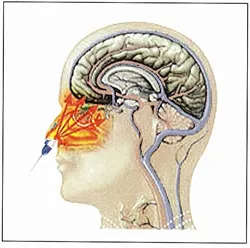
Correction of cellular and humoral immunity,
increase in the phagocytic activity of macrophagues,
increase in the bactericidal activity of the
blood serum and complementary systems, decrease
in the levels of the C-reactive protein, the
medium molecules and the plasma toxicity, increase
in the amount of the IgA, IgM and IgG immunoglobulins
in the blood serum , the change in the level
of circulating immunity complexes, increase in
the number of lymphocytes and a change in their
functional activity, increase in the capability
of T-lymphocytes to form rosettes and in the
DNA-synthetic activity of the lymphocytes, stabilization
of the relation of T-suppressors and T-helpers,
increase in the non-specific resistance of the
organism, improvement in the rheological properties
of blood and microcirculation, regulation of
the blood`s haemostatic capacity, impacts on
blood vessel dilation, anti-inflammatory effect,
analgesic effect, normalization of ion composition
of the blood, improvements in the blood function
of oxygen transportation and decrease in the
particle voltage of carbon dioxide, arterial-venal
difference in the amount of oxygen is increased
as a sign of normalized tissue metabolism, normalization
of proteolytic activity of the blood, increase
in the anti-oxidizing activity of the blood,
normalization of POL (peroxide oxygenation of
lipids) processes in cell membranes, stimulation
of erythrocytes, stimulation of intracellular
DNA-correction systems in case of irradiation
by radioactive materials, normalization of exchange
processes (of lipids, proteins, hydrocarbons,
intracellular energy balance), normalization
and stimulation of regeneration processes. |
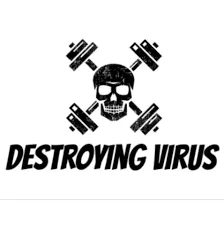
Gejnic,
Moskvin, Achilov: Intravenal laser blood irradiation,
which is a comprehensive source of information you
won`t find anywhere else. A part of it is published
on Russian servers. We have acquired information from
many sources from this article. We focus Your attention
to S.V.Moskvin, a
significant specialist in this field and the author
of the article published on the Medprosvet website.

The universality of low-energy laser irradiation`s biological
effectiveness, and particularly the method of blood irradiation,
is conditioned by the influence on regulation and homeostasis
support on the lower cellular and subcellular levels.
However, the irradiation also corrects physiological
reactions on higher levels. The pathological focal points
of these processes are the first places in which people
notice an improvement, but enhancements of rheological
blood properties and microcirculation help to spread
the improvements into all organs. This is why it works
with so many diseases.
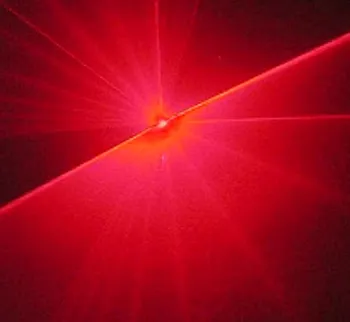
Only a very small amount of energy enters into the organism,
only about 9Joule / 5mW during 30min. (or 1 800 sec.).
Part of it leaves the body immediately. Just for illustration,
a daily dose of consumed food brings more than a million
times greater amount of energy into our body. The laser
light energy is absolutely clean, it is not affected
by digestive processes and is totally without harmful
constituents. It is much cleaner than what we breathe,
eat or drink. This energy helps the state of the human
organism to normalize. Laser blood irradiation has normalizing
and regulative effects – it uses the organism`s
regulatory mechanisms to either stimulate or hinder certain
activities when necessary. The answer therefore is – it
is definitely not harmful. The effect is only and purely
a normalizing one, working on a scale allowed by the
particular body.
Four
Color 10 Beam 3 in 1 Wrist Laser

Laser blood irradiation triggers changes in blood production
elements, changing the properties of blood itself (blood
plasma composition, rheological properties etc.) which
leads to reactions on the level of whole organs and tissues.

When suffering from a disease, blood properties become
particularly significant. Only pathological affection
(infection, influence of various substances) on blood
itself exposes it to changes. Biochemical changes that
our blood experiences during lifetime are a reflection
of emerging damage to our organism. Our organs are connected
to each other by blood vessels and blood. Our blood is
therefore a kind of reporter of everything that takes
place in our body. One of the first things low-level
laser blood irradiation triggers is the activation of
microcirculation. It works on the tissue level, its performance
is universal for all organs, where it helps with restructuring
by means of intensifying certain functions of cell parts.
Four
Color 10 Beam 3 in 1Wrist Laser

Improvements in microcirculation and supplying of various
tissues with oxygen by means of ILBI (Intranasal Laser
Blood Irradiation) are closely connected to the positive
effects of low-level laser blood irradiation on the exchange
of substances, because it also increases the oxygenation
of energy materials – glucose, piruvat, lactose.
[Skulchenko V.V., 1991].
Blood Laser
Therapy for the heart and Circulation
Four
Color 10 Beam 3 in 1Wrist Laser
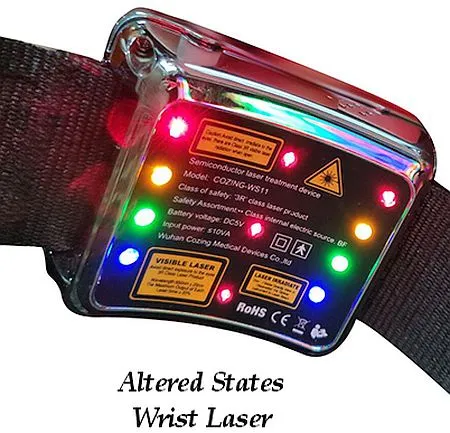
Red Laser Activate
Metabolism: Lower Blood Pressure and Improve Blood Flow
An unhealthy lifestyle enhance the possibility that cholesterol
and other blood fats build
up on vessel walls and thus impair the oxygen and nutrient
supply to our organs.
Laser light activates different enzymes and decomposes
redundant fat in the bloodstream. It increases the oxygen
amount in the blood, boosts metabolism and enhances the
process of lipid peroxidation to reduce cholesterol in
the vessels.
Effects of Green Light and Yellow Light
Yellow light promotes serotonin and vitamin D metabolism.Yellow light stimulates
the mitochondrial respiratory chain at
complex III (cytochrome) and acts strongly detoxifying
and anti-depressive.
Green light binds to hemoglobin, the ferrous blood compound
in the red blood cells. It improves the function, behavior
and cell elasticity of those cells as well as the oxygen
supply.other effects: improved oxygen affinity, decreases
in lactic
acid, reduced blood viscosity, improved blood flow, activation
of reparative,
Effects of Blue light Blue
light stimulates the first complex of the respiratory chain
(NADH dehydrogenase). Effects: anti-inflammatory, enhances
NO production, activates telomerase (Anti-Aging!) By increasing
the activity of fibroblasts blue light optimizes wound
healing and improves the oxygen utilization in the
tissue.
| |
1. First Option: Wear
the laser watch
First Step: Wear the main machine on the inner
side of the left wrist, as shown in the diagram,
so as to ensure the laser irradiates radial artery
and neiguan acupoint precisely; and then fasten
the wrist strap.
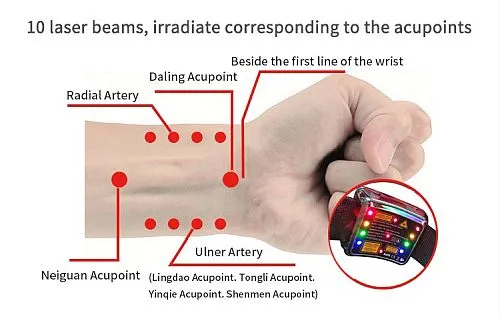
|
| |
|
 |
2. Second Option:: Use
the ear probe
Wear the ear probe in the ear, insert the Ear
probe accessory in the topside accessory plug of
laser watch, (Reported by many to be very helpful with
Tinnitus) |
| |
|
 |
3. Third Option:: Nasal
probe
When changing tratement from ear, to nose The
nasal probe uses the same accessory output plug
as the ear probe.
avoid eye contact
of laser. |
Conclusions: In summary, more than 25 years
of experience of using laser energy at 630-640 nm has shown
that this waveband directly influences the parameters of
all cells in the blood, blood plasma, the coagulation process
and all the structural components of the vascular wall.
Additionally, ILBI directly or indirectly affects
the cells of the immune system, hormones, and exchange
processes
in an organism, thereby not only improving the function
of the vascular system, but also the other systems of an
organism. It can finally lead to lower the incidence and
number of vascular diseases, and indirectly to the reduction
of the number of diseases in other organs and even systemically, thus helping to prolong the lifespan. Source

Four
Color 10 Beam 3 in 1 Wrist Laser
Laser energy at 630-650 nanometers
is arguably the most effective for irradiation
of blood and the vascular wall. Photons at these
wavelengths are absorbed by oxygen, improve microcirculation,
can change the viscosity of the blood and affect
vascular endothelium, plus Smash viruses.
For general use, they suggested
30min Two to three times a day. (Wear only ON left
wrist)

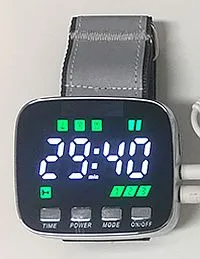 |
Four
Color 10 Beam 3 in 1 Wrist Laser
Power source
Lithium battery
Laser
probe for Ear 650nm
laser diode Max 5mW for each laser
diode
Laser
probe for nose 650nm laser
diode Max 5mW for each laser diode
Laser
for wrist 650nm laser diode
(Red, plus Blue, Green, Yellow laser)
USB charging cable
Instruction manual

|
|
Standard fda required warning
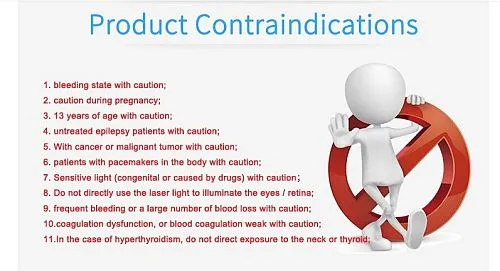
Sadly The web page authors after 39 years of working with
alternative health in our Free alternative clinic,are not
allowed to endorse the accuracy or reliability of any of
the information, content or guidelines (collectively, the "Materials")
contained on, distributed through, or linked, downloaded
or accessed from these links. You hereby acknowledge that
any reliance upon any Materials shall be at your sole risk.
Caution
1)Not suitable for the following groups:cancer patient,pregnancy ,patient
with hemorrhagic disease.
2)Children shall only use the instrument under the direction of their
parents.
3) The elder patients and sensitive patients must accept the low-power
and short treatment at the beginning,the rate of work could be increased
as the body adjusts.
Those of You interested in the matter of laser blood
irradiation are welcome to check out the following links
that will help you learn more. For specialists, we recommend
the book written by
Gejnic,
Moskvin, Achilov: Intravenal laser blood irradiation,
which is a comprehensive source of information you won`t
find anywhere else. A part of it is published on Russian
servers. We have acquired information from many sources
from this article. We focus Your attention to S.V.Moskvin, a significant specialist in this field and the author
of the article published on the Medprosvet website. You
can find more information on the websites below.
Similar Articles for PMID: 25941421
Source
•http://www.medprosvet.ru/articles/?content=article&id=24
• http://www.matrixlaser.ru/?page=media&act=pubs&subact=6
• http://www.matrix-mustang.ru/?page=products&act=laser&subact=VLOK-405
• www.egla.de
• www.webermedical.com
• www.walt.nu
• www.laserpartner.cz
• www.laserpartner.org
• www.laser.nu
Ing. František Kokoš, YALONG TRADE s.r.o., 10.6.2009, revised
on 26.11.2009.
Amazing healing tools |

